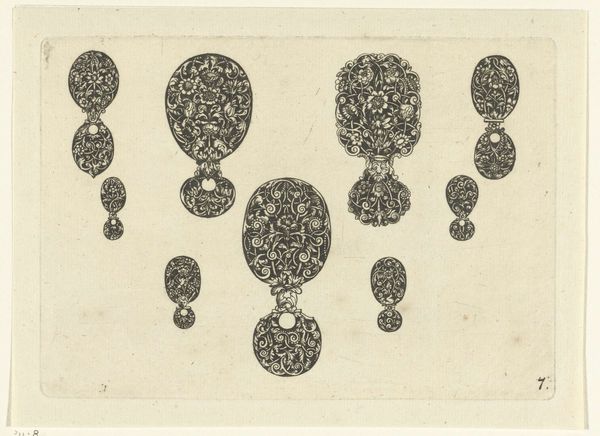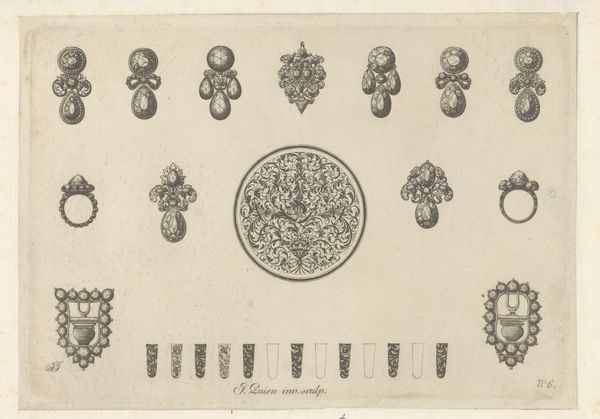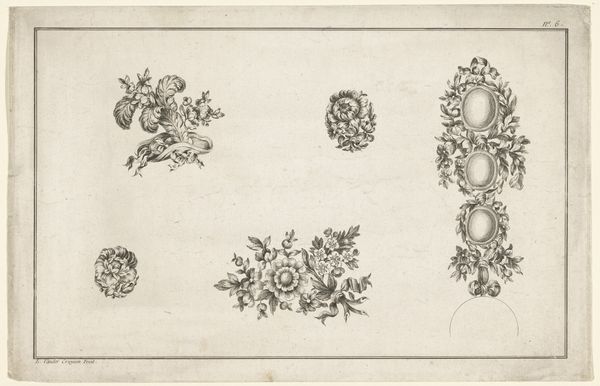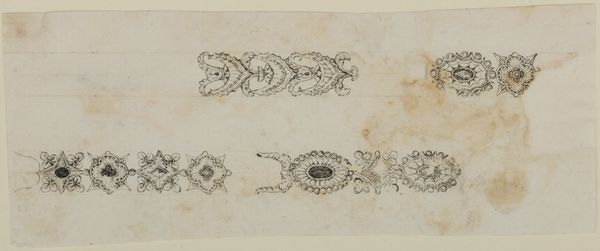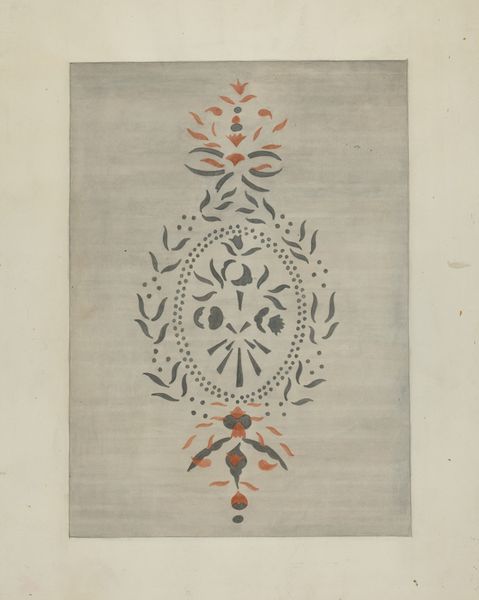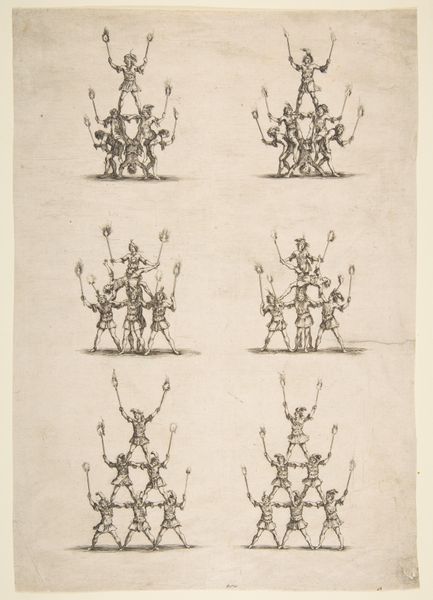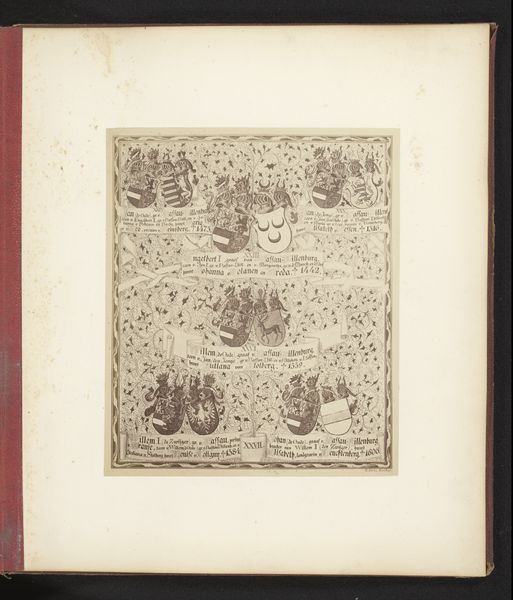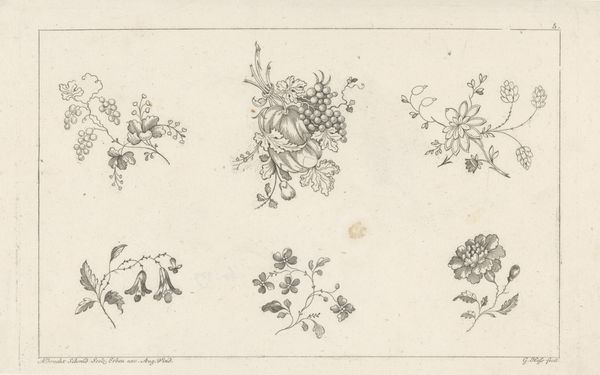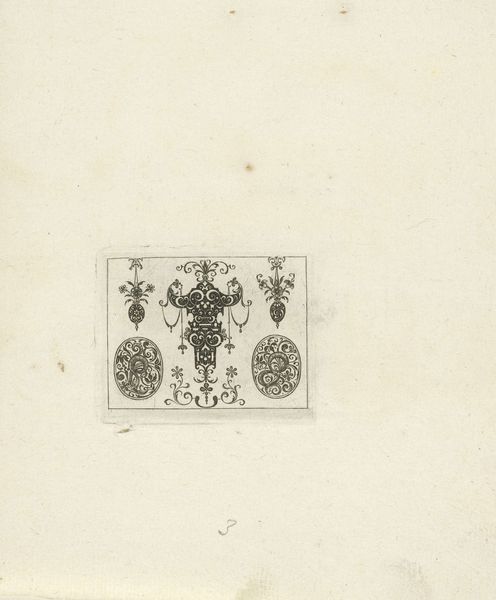
graphic-art, ornament, print, paper, engraving
#
graphic-art
#
ornament
#
baroque
#
ink paper printed
# print
#
old engraving style
#
paper
#
line
#
islamic-art
#
engraving
Copyright: National Gallery of Art: CC0 1.0
Editor: This print, simply titled "Jewelry Ornament" by Theodor de Bry, showcases several jewelry designs, rendered in what looks like engraving on paper. It's intricate but also somehow austere... What do you make of its stark beauty? Curator: Indeed. Each swirling motif whispers stories. De Bry's work, particularly these ornaments, carries echoes of cross-cultural dialogue. Notice the tension between the geometric order, which is reminiscent of Islamic art, and the baroque flourishes, so typical of European sensibilities. These designs become symbolic meeting points. Editor: So, the symbols themselves tell a story of cultural exchange? Curator: Precisely! Think of ornaments not just as adornments, but as portable emblems of status, belief, and identity. These particular shapes, for example, repeated circles and ovals, held meaning beyond aesthetics. Can you imagine what those meanings might be? Editor: Maybe the circles represent wholeness or continuity, given how prominent they are? And the floral designs seem very stylized...almost like abstracted versions of real flowers. Curator: Very good! Such observations take us closer to how the early modern viewer might have understood this print. It's a potent blend of the observed world rendered through the filter of human ideals. The stylized florals can signify the bloom of empires, a visual claim of earthly paradise. Editor: It's incredible how much meaning is packed into something seemingly so simple. Curator: The enduring power of visual language! These images, like echoes, still resonate with our subconscious today.
Comments
No comments
Be the first to comment and join the conversation on the ultimate creative platform.
